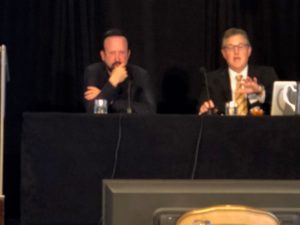A footnote in recent 11th Circuit opinion tries to bring some order to the jurisdictional morass that is post trial motions, the time for filing an notice of appeal, and the difference between a claims processing rule (which can be waived) and subject matter jurisdiction (which cannot). It may only be a footnote, but I am going to take some time to unpack it here, as these post trial issues can be very confusing.
Is Your Post Trial Motion Timely?
A timely motion filed pursuant to Fed. R. Civ. P. 50(b) or 59(a) or (e) tolls the time for appealing a judgment pursuant to Fed. R. App. P. 4(a)(4)(A). In this case, the appellant did file post trial motions, but they were late. The court held that because they were not filed within 10 days, they did not toll the time for appealing the underlying judgment. And because the post trial motions did not have a tolling effect, the notice of appeal directed to the underlying judgment was likewise untimely. And there is no way around it — the timely filing of a notice of appeal is a jurisdictional requirement. This is because
“[t]he time limits in Appellate Rule 4(a) are based on the statutory time limits for filing a notice of appeal found in 28 U.S.C. § 2107″
citing Green v. DEA, 606 F.3d 1296, 1301 (11th Cir. 2010).
Did the Appellee Waive the Timeliness Issue?
So if the appeal of the underlying judgment was waived, why are we reading a 22 page opinion with the jurisdictional issue relegated to a page-long footnote? This is where claims processing versus jurisdiction comes in. Yes, the appellant waived jurisdiction over appeal of the underlying order by failing to file timely post-trial motions and waiting more than 30 days to file a notice of appeal. But the trial court attempted to give the appellant more time to file those post trial motions, even though such attempts are forbidden by Federal Rule of Civil Procedure 6(b)(2). While the trial court technically wasn’t allowed to give the two extra days to file the post trial motions that it gave, the Appellee failed to preserve an objection to that issue. The Eleventh Circuit treated Rule 6(b)(2) as a claims processing rule rather than an jurisdictional rule, and held that the Appellee waived objection to the fact that the trial court entertained entertained the post trial motions.
A Timely Notice of Appealing Untimley Post Trial Motions
The Eleventh Circuit concluded that while the trial court didn’t have authority to extend the time to file post trial motions, the court did have the authority to substantively rule on the motions since the Appellee didn’t preserve objection to that issue. The Appellant filed its notice of appeal of the order denying the post trial motions within 30 days of the trial court’s entry of that order. The court therefore held it had jurisdiction to review the order on the post trial motions.
Why it Matters
Hence the 22 page opinion in Advanced Bodycare Solutions, LLC v. Thione Int’l, Inc., No. 09-13151 at n. 15, __ F.3d __ (11th Cir. Aug. 25, 2010)[.pdf]. All of which, by the way, ended up in the appellate court upholding the verdict in an event. But the Appellant likely waived some of its grounds for appeal by missing jurisdiction for review of the underlying final judgment. Whether that would have mattered in this case is unclear. But in any event, it’s a shame to waste precious word count on jurisdictional issues, when the whole situation can be avoided by careful application of the rules.
Postscript
An important footnote from me on this footnote holding: The calculation of time in this case appears to have been made under the old calculation rules, wherein you excluded weekends and holidays for short periods of time. Don’t forget that nowadays, Days are Days.

